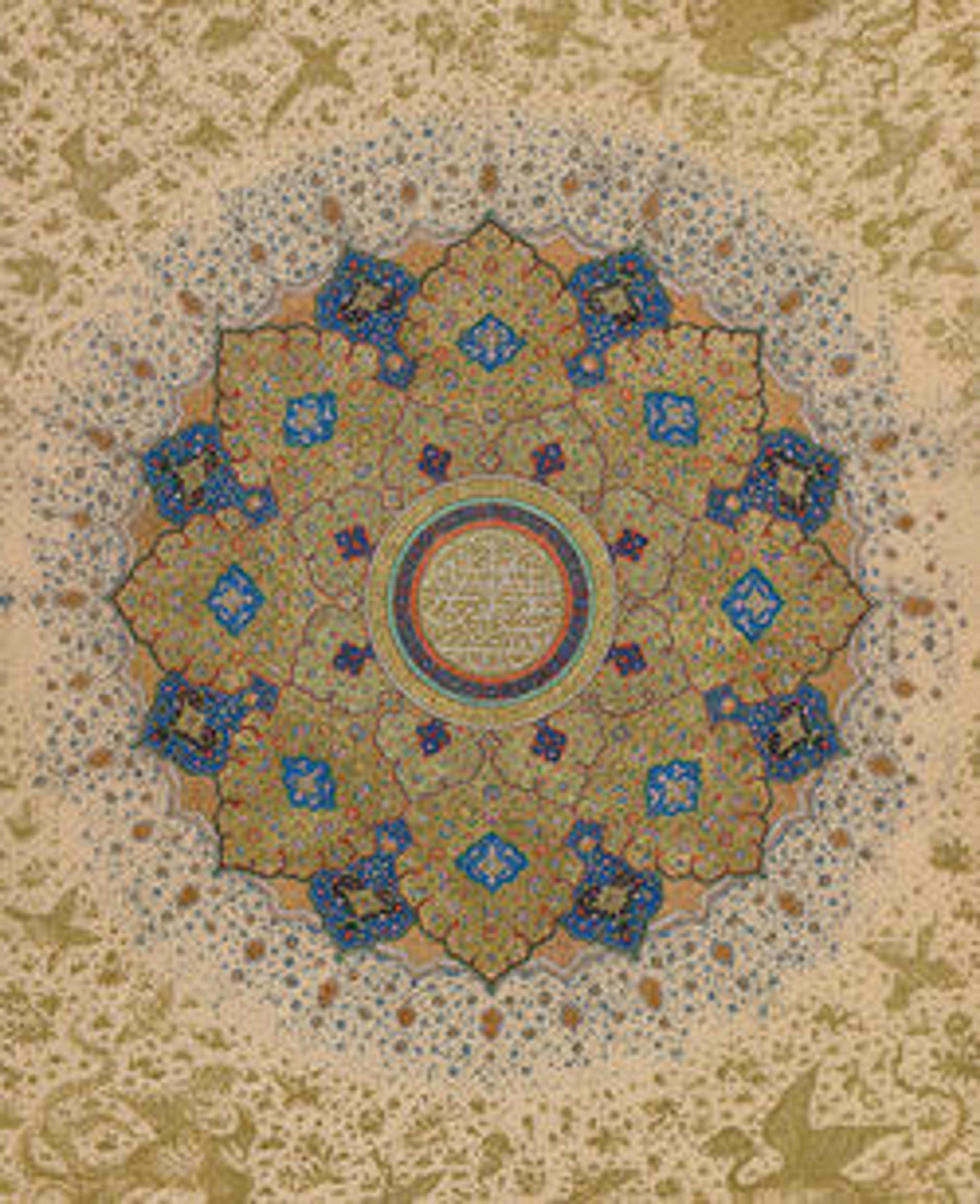Star-Shaped Tile
Eight-pointed star tiles from Nasrid Spain are rare, but this example bears motifs specific to lusterware produced in Málaga, such as the botanical decoration radiating from a central flower or plant motif. The grapevine pattern with naturalistic leaves and bunches of fruit is a reference to the classical heritage of Islamic art.
The arrival of the luster-painting technique in Islamic Spain is now thought to have come from Egyptian craftsmen who moved to the Malagan coast after the fall of the Fatimid Empire in 1171. The relocation of such craftsmen contributed to the dissemination of designs from North Africa and the western Islamic world into Andalusian arts.
The arrival of the luster-painting technique in Islamic Spain is now thought to have come from Egyptian craftsmen who moved to the Malagan coast after the fall of the Fatimid Empire in 1171. The relocation of such craftsmen contributed to the dissemination of designs from North Africa and the western Islamic world into Andalusian arts.
Artwork Details
- Title:Star-Shaped Tile
- Date:first half 15th century
- Geography:Made in Spain, probably Malaga
- Medium:Earthenware; luster-painted on opaque white glaze
- Dimensions:H. 9 3/4 in (24.8 cm)
W. 9 3/4 in. (24.8 cm) - Classification:Ceramics-Tiles
- Credit Line:H.O. Havemeyer Collection, Gift of Horace Havemeyer, 1941
- Object Number:41.165.41
- Curatorial Department: Islamic Art
More Artwork
Research Resources
The Met provides unparalleled resources for research and welcomes an international community of students and scholars. The Met's Open Access API is where creators and researchers can connect to the The Met collection. Open Access data and public domain images are available for unrestricted commercial and noncommercial use without permission or fee.
To request images under copyright and other restrictions, please use this Image Request form.
Feedback
We continue to research and examine historical and cultural context for objects in The Met collection. If you have comments or questions about this object record, please contact us using the form below. The Museum looks forward to receiving your comments.
